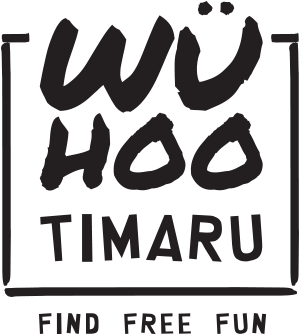By Roselyn Fauth

Free Ground area at Timaru Cemetery. Photo Roselyn Fauth 2025
When I walk through the older parts of the Timaru Cemetery, I often notice the quiet stretches of grass where no headstones stand. At first glance, it looks like empty space, but it isn’t. Beneath that earth rest hundreds of people who were buried in what was once called free ground. These were the sections reserved for those who could not afford a private plot or who were buried with the help of government assistance.
Out of curiosity, I wanted to learn more about who these people were. It is a deeply sensitive subject, one that touches on hardship, pride, and grief. Sometimes families who needed help felt shame and chose not to record or share the details of a burial. Others had no family or friends left to arrange it. Some were stillborn babies whose burials were quietly managed by hospitals. Whatever the circumstances, each of these people had a story, and together they form part of who we are today.
In November, we plan to unveil a monument at the Timaru Cemetery to honour those who rest in free ground and those who lie without a marker in the wider cemetery. In the past, if public funding was used for a burial, a headstone was not permitted unless the cost was later repaid. I suppose that was to ensure the help went only to those who truly needed it, but it also meant that many graves were left unmarked forever.
In one section of the cemetery there is a large open lawn. I often see people walking their dogs there, enjoying the space, and I realised that many may not know they are walking over more than seven hundred graves. This is the area once known as free ground. Throughout the rest of the cemetery, there are also small gaps between headstones where people rest without a marker to show who they were or that they are even there. These quiet spaces tell a story too, one that is easy to overlook unless you know where to look...
When the reserve for the cemetery was first set aside in the 1860s, burials were led by the local churches. Later, an Act of Parliament transferred responsibility for cemeteries to local councils, which oversaw their management and record keeping. The Timaru Cemetery as we know it today grew from those early church-led burial grounds into a community resting place for all, regardless of circumstance or faith.
I have been learning about some of these people, the quiet ones whose names are written only in the old cemetery ledgers. One of them is Emma Jane Watts, a young mother from Kent, England.
Emma’s Story
Emma Jane Chesson was born in Kent in 1857. She married Thomas Watts, a brickmaker and keen bandsman, and in 1880 they boarded the immigrant ship Staat Haarlem bound for New Zealand. The couple, with their baby Elizabeth Jane, landed by surfboat through the breakers at Timaru, on the very stretch of beach that would later become Caroline Bay.
The young family settled in Browne Street, in the gully behind what is now The Warehouse. Life was busy and full of promise, and over time they had six children. But in the late 1880s, a deadly outbreak of typhoid struck the town, spreading through contaminated wells and long-drop privies. Thomas became ill and died on 22 May 1889, aged only thirty-five. His burial was recorded in a marked plot, but no headstone was ever placed.
A year later, tragedy struck again. With six children and little support, Emma herself became ill and died on 2 June 1890, aged just thirty-three. She was buried in free ground, her grave recorded simply in the Timaru Cemetery register:
Watts, Emily – Age 33, Interred 5 June 1890, Section General Row 88, Plot 219.
Her burial would have been arranged with government assistance, as many were in those times. That meant no headstone was allowed unless the cost was later repaid. Even so, her story deserves to be remembered.
Their eldest daughter, Elizabeth Jane, grew up and eventually married Forrester Adams in 1902. Together they ran a bakery and later a cookhouse for the Waitaki Hydro construction workers before retiring to Butler Street in Timaru, not far from where her parents began their New Zealand life.
Emma’s story, like so many others in free ground, is a reminder that history is not only written in stone. It lives on through the people who choose to remember, and through the quiet recognition that every life, no matter its hardship, helped shape the place we call home.

c.1860. Timaru town NZ Heritage Maps Platform accessed 22102025 maps-recollect - Heaton and Browne Streets https://maps.recollect.co.nz/nodes/view/1138

Chesson, Samuel 21 Years 8 May 1883 - Timaru Cemetery Row 12 and Plot 275
Watts, Thomas 35 Years 24 May 1889 - Timaru Cemetery also Row 12 and Plot 275
In the same grave as Thomas lies Samuel Chesson, Emma Jane Watts (née Chesson)’s younger brother, a New Zealand Railways fireman who died on 8 May 1883 when the engine tender separated near Hinds. An Ashburton inquest found accidental death and criticised the locomotive couplings of the day. Samuel’s fellow railwaymen carried his coffin, and the Volunteers and Artillery Band attended in military honours. The plot at Timaru Cemetery (General, Row 12, Plot 275) bears Samuel’s name; Thomas rests there too, though his name was never added to the stone.
Sources and Acknowledgements
This story was written using details from research shared by Joe Adams, Editor of the New Zealand Family History Magazine (26 September 2012), alongside records from the Timaru Cemetery register.
Background information on local typhoid outbreaks, immigration, and burial practices was drawn from public historical sources and contemporary newspaper archives.
My thanks go to those who continue to care for the history of the Timaru Cemetery and to the families, known and unknown, whose stories still rest there in free ground.
